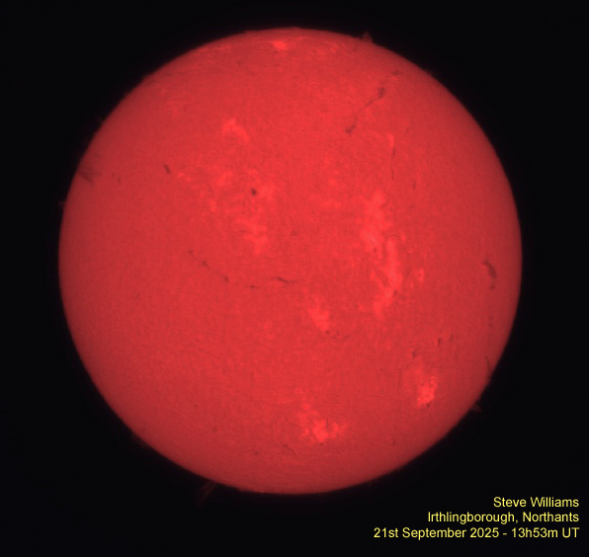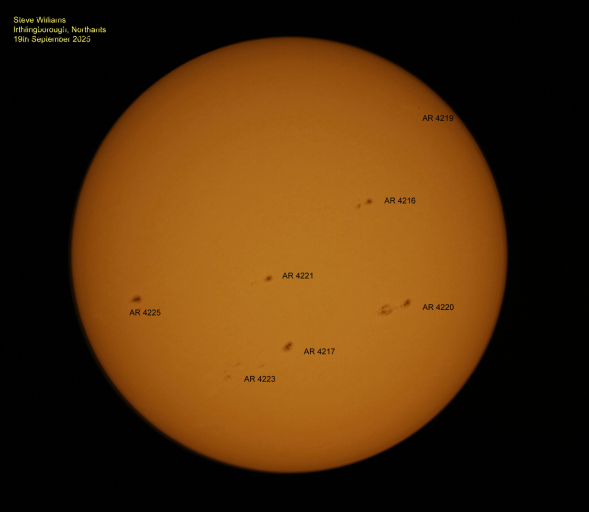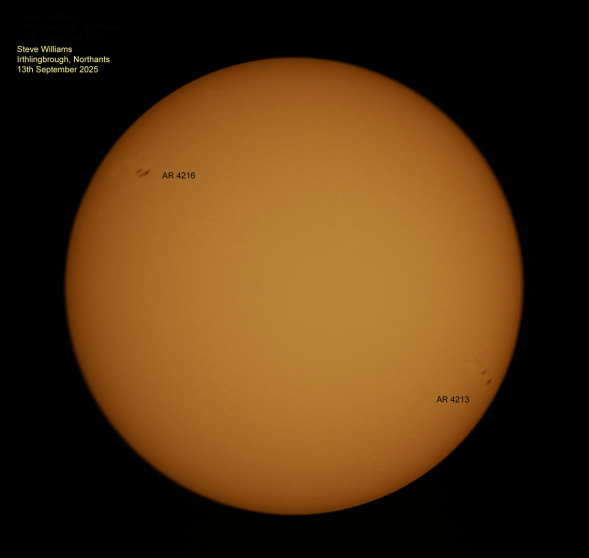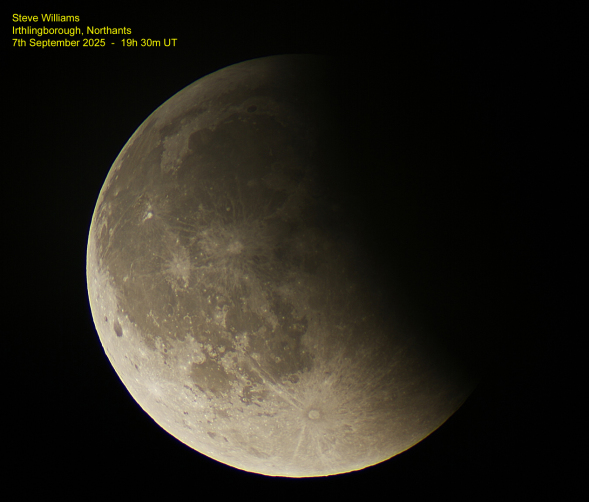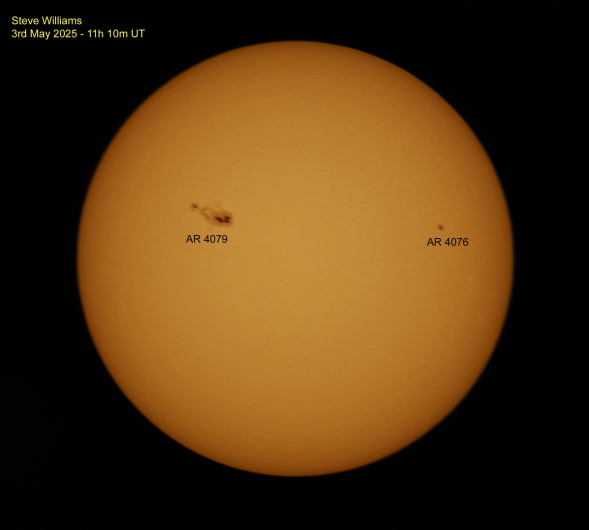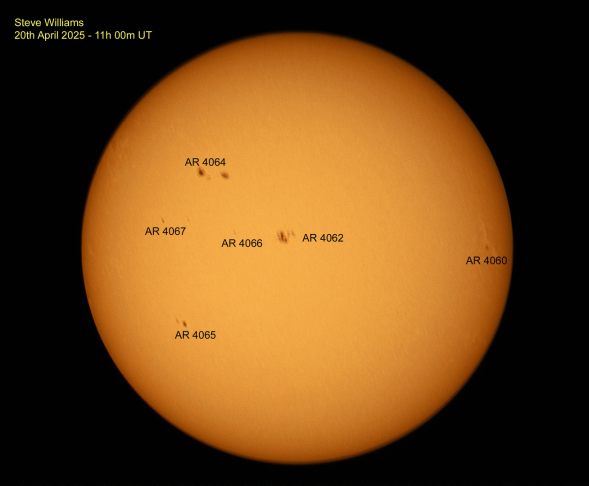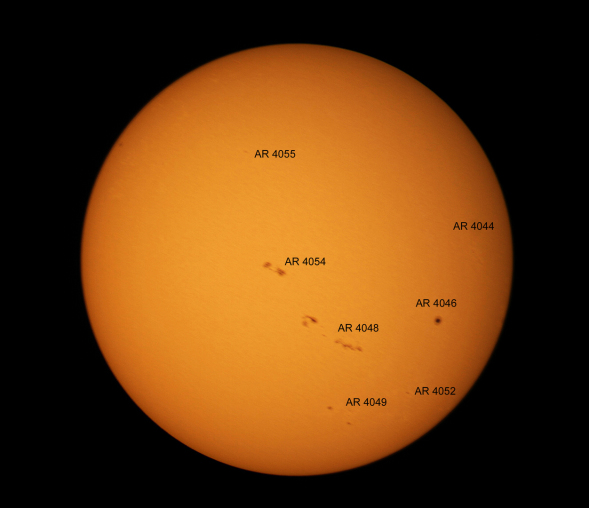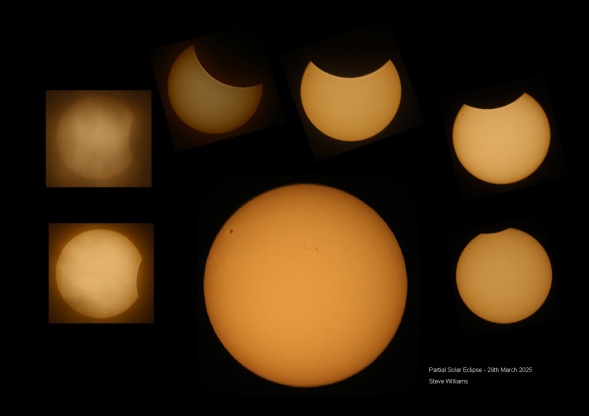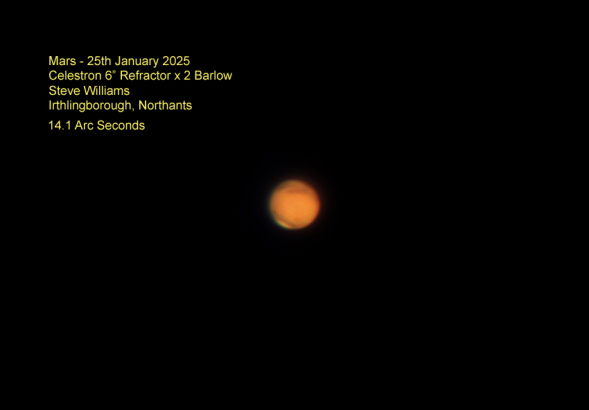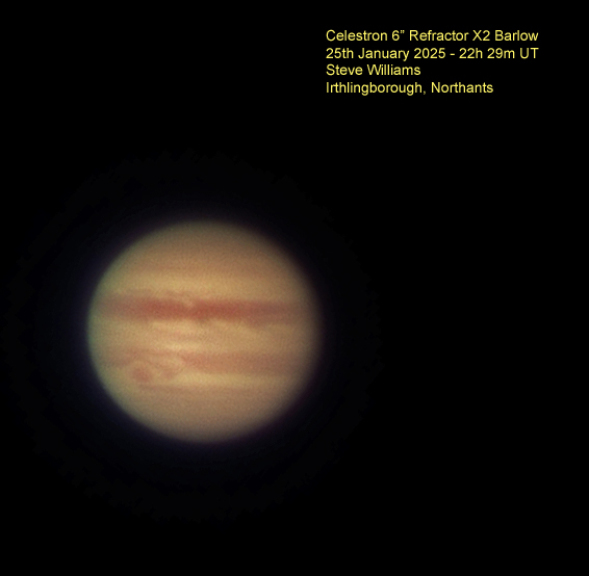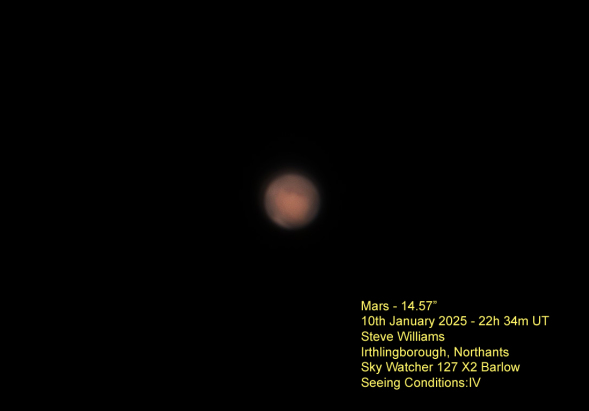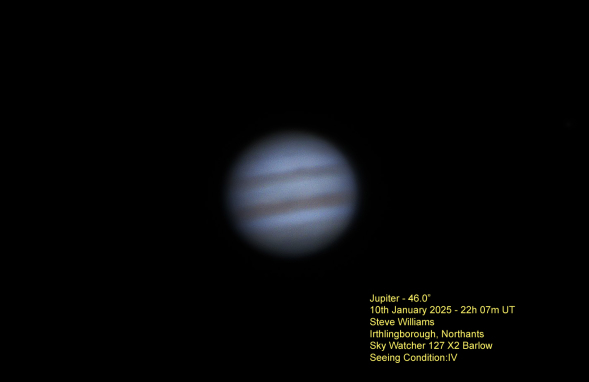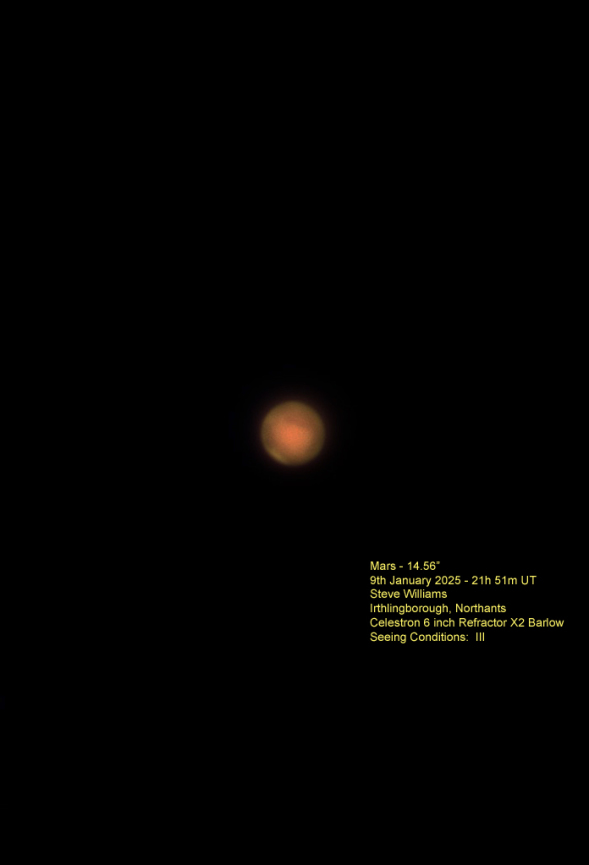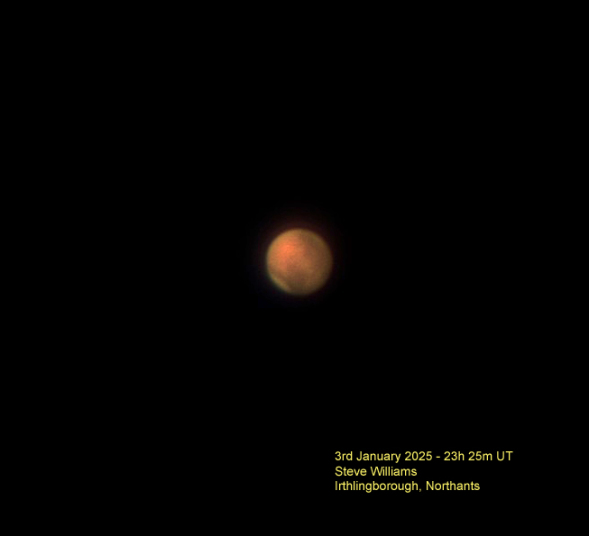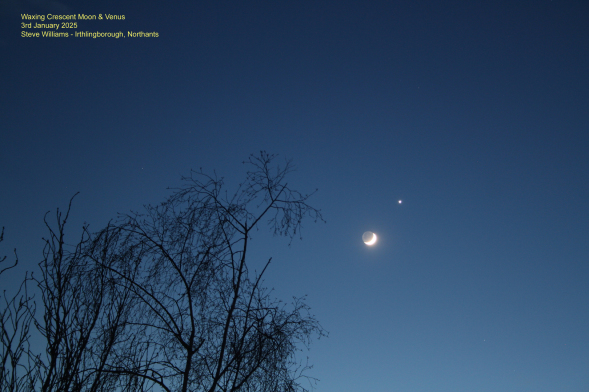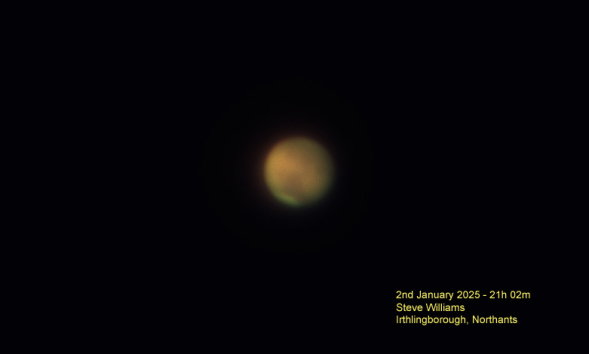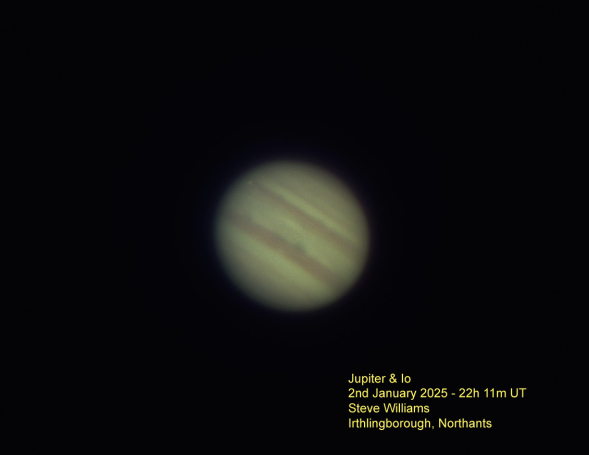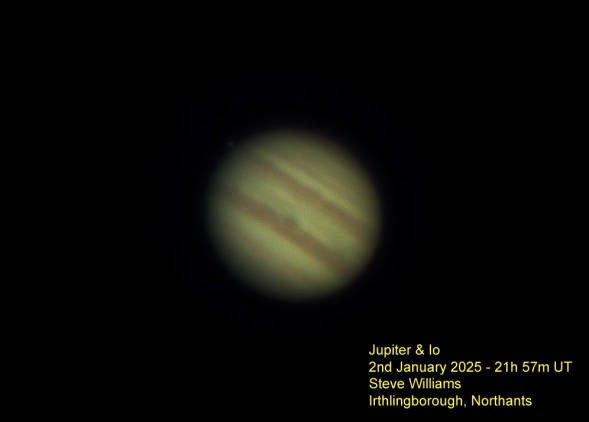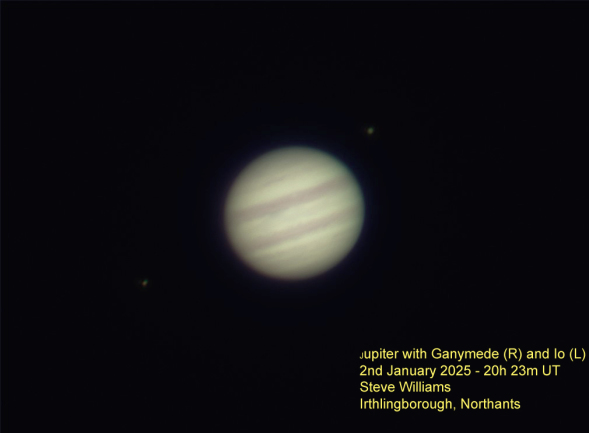September 2025
A Hydrogen Alpha view of the Sun taken on 21st September 2025 using an Acuter 40 Phoenix Solar Scope. Montage of two images.
A view of the Sun taken on 19th September 2025 showing just how many changes can take place in a few days!
As it's been a couple of months since I last imaged the Sun, I took this image in 'white light' on 13th September. Only a couple of sunspots were visible, giving a relatively quite appearance to the solar disc.
A view of the end part of the total lunar eclipse which took place on the early evening of 7th September 2025
May 2025
The Sun As Imaged Through A 'White Light' Filter On 3rd May 2025. Sunspot AR 4079 is the largest so far for 2025!
April 2025
The Sun as imaged through a 'White Light' filter on 20th April 2025
The Sun As Imaged Through a 'White Light' Filter on 6th April 2025
March 2025
A montage of images of the 29th March 2025 Partial Solar Eclipse
January 2025
Mars as imaged on 25th January 2025 using a Celestron 6-inch Refractor and X2 Barlow. Despite being only nine days past opposition, the Martian disc size has already started to decline!!
Jupiter as imaged on 25th January 2025 using a Celestron 6-inch Refractor and X2 Barlow. The Great Red Spot can be seen to the lower left along with some cloud structure in the equatorial region.
Mars as imaged on 10th January 2025 using a Sky Watcher 127 and X2 Barlow.
Jupiter as imaged on 10th January 2025 using a Sky Watcher 127 and X2 Barlow.
Mars as imaged on 9th January. Taken through a 6-inch Refractor with a X2 Barlow
Mars as imaged on 3rd January 2025. Taken through a 6-inch Refractor with a X2 Barlow.
The waxing crescent Moon and Venus as they appeared in the south-western early evening sky on 3rd January 2025
Mars as imaged on 2nd January 2025. Taken through a 6-inch Refractor with a X3 Barlow.
Jupiter and Io (silhoutted against the disc of the planet) taken through a 6-iinch Refractor and X3 Barlow.
Jupiter and the Galilean moon Io (just on the limb at the 10 O'Clock position). Taken through a 6-inch Refractor and X3 Barlow.
Jupiter as imaged on 2nd January with 2025 with two of it's Galilean moons's (Ganymede to the right and Io to the left)

